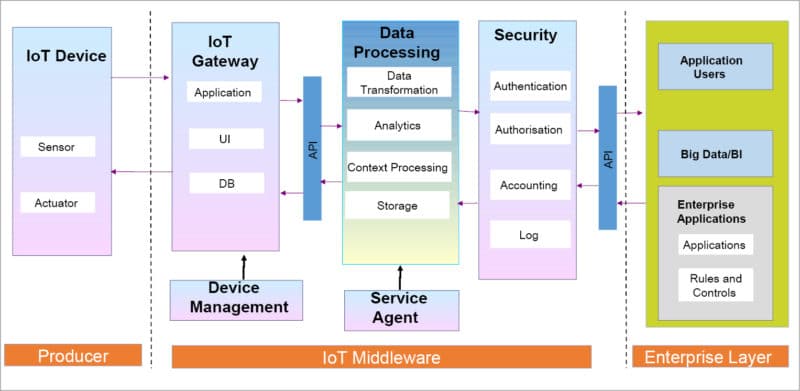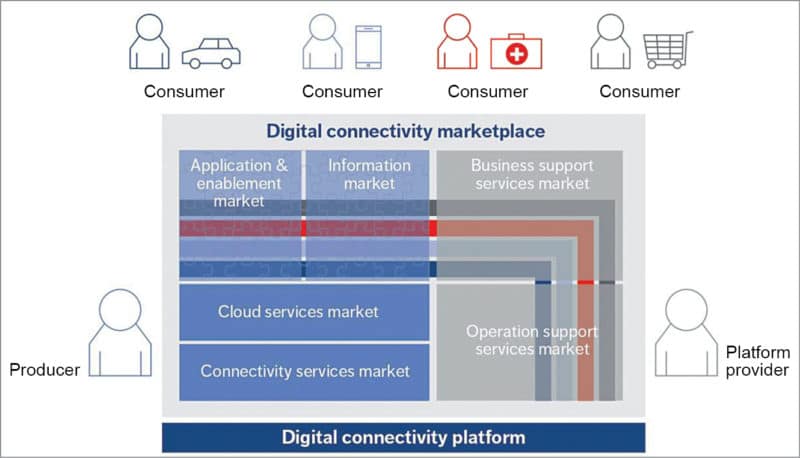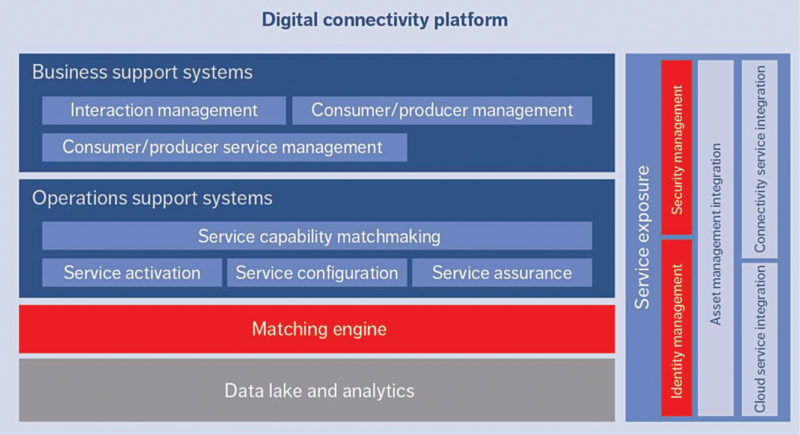Digital platforms are creating a more global labour market by keeping virtual teams connected and giving them the flexibility to set their schedule. Such platforms make it easier for companies to find customers, monetise under-utilised assets and ease transactions.
Digital technologies provide opportunities for entrepreneurs and businessmen to create better experiences for their employees, customers and ecosystem partners. These help them achieve better performance, efficiency and revenue with low investments. Digital transformation involves two primary activities: building a digital platform and building a new operating model.
Digital platforms are online businesses that facilitate commercial interactions between at least two different groups, with one typically being suppliers and the other consumers.
MakeMyTrip, Amazon, Cars24, Swiggy, Facebook, Google, Ola, Upwork and Naukri are all digital platforms, but their business models are different from each other, and they interact with end-users and other businesses in different ways. Each platform has created different rules to optimise these interactions for a unique customer experience.
A digital platform includes a data-analytical engine, an artificial intelligence (AI) engine and a machine learning transactional engine to perform tasks or rules-based activities. It has APIs, or tools that allow digital platforms to talk to other software, and tools for monitoring regulatory compliance. The digital platform handles an end-to-end business process necessary to create better experiences for its users.

Metrics of digital platforms
Digital platforms have experienced significant growth in adoption due to several reasons, including increase in Internet adoption, maturation of the online advertising industry, rise in smartphone use and growth of cloud computing.
Success of a digital platform depends on users adopting the platform and not on the technologies implemented. An experiential approach must be followed for a digital platform to be successful. This focuses on people who will use the digital platform—whether they are customers, employees or other ecosystem partners. The need or utility of the platform will differ according to type of users, their responsibilities and the tasks for which they use the platform.
Thus, the first step in the experiential approach to building or assembling a digital platform is to identify the needs of various types of users, because that is the experience that the platform must deliver; otherwise, they would not adopt/use it.
The second step is to establish metrics, which is a way to measure whether the platform delivers that experience (business objective) in a timely fashion. Two typical ways to measure user experience are completeness of the job and time it takes to complete it.
Companies need to design their digital platform around delivering important experiences for each type of user and finding the appropriate metrics. They should then select technologies that will support those experiences and metrics.
There are many calls to regulate digital platforms. Motivations behind regulations include exploitation of workers, dangerous content (such as fake news), data security and privacy, and national or regional competitiveness. Any new regulations should be narrowly-tailored to deal with specific problems as they occur, such as addressing copyright infringement.
Applications and prospects
Digital platforms are required by different business models such as advertising, information, e-commerce and pay-per-service. Platforms required for these business models are media platforms such as Gaana and Netflix; collaboration platforms such as Slack, WhatsApp and Skype; search engine platforms such as Google and Bing; social platforms such as Facebook, Twitter, Instagram, LinkedIn and Pinterest; knowledge platforms such as Byju’s; e-commerce platforms such as Shopify and Amazon; online marketplaces such as Apple Store and Google Play; service exchange platforms such as Uber and MakeMyTrip; cloud platforms as a service (PaaS) such as Microsoft Azure; infrastructure as a service (IaaS) such as Amazon S3; and database as a service (DBaaS) such as Amazon RDS and Microsoft Azure DocumentDB.

Digital platforms allow a company to provide an e-commerce platform for consumers to purchase from third-party sellers. More recent surges of innovation around digital platforms and their emphasis on customers have been driven by three transformative technologies, namely, cloud computing providing a global infrastructure, social networks connecting people and mobile devices providing accessibility from anywhere.
Evolution of a platform-enabled economy has resulted in a globally-accessible network of contributing content, developing applications, building businesses, and purchasing goods and services.
Digital platforms for IoT applications
The Internet of Things (IoT) platforms have become an essential part of the IoT stack to manage, monitor, store, secure and analyse IoT data. These play a role in security, and need to be scalable and flexible to respond to customer needs, use-case demands and goals that vary depending on the use-case. This enables device monitoring and management, data acquisition, IoT application programming, security, and firmware updates, visualisation, analytics and adapters to connect to enterprise systems.
An IoT platform is the logical evolution of the IoT, in combination with other technologies. It focuses on levels of connectivity and connected devices to Edge applications. An IoT platform enables solutions within several use-cases and services. It provides Edge-to-cloud solutions to connect, monitor and manage energy and assets at infrastructures remotely.
Alois Kliner, head of division digital enterprise security, G+D Mobile Security, says, “We are living in an extraordinary era; a time that is defined by connectivity and interconnected things. This ever-growing connectivity requires a powerful infrastructure that can address the needs presented by its users. Platforms at the core of this infrastructure are responsible for intricate management and connectivity of all connected devices.”
IoT platforms enable a secure connection between devices, and handle everything between networks, access points, hardware and applications. These are generally divided into three main types: application enablement/development platforms (AEPs/ADPs), data/network/subscriber management platforms and device management platforms (DMP).
AEPs provide foundational services that include application-making and enabling device management and communication, security, database, analytics and external interfaces.
Role of digital platforms to provide connectivity
The digital connectivity marketplace provides capabilities to exchange information and connectivity for new business models. Future digital connectivity marketplace will offer interaction between producers and consumers by exposing connectivity and cloud services on one side, and collecting requirements from consumers and matching them against capabilities of the services, on the other.
Services exposed in the marketplace could be supplied by multiple producers based on networks and infrastructures required to produce these services. Consumers representing various industries will require connectivity and cloud services to digitalise their business and operational processes.
Industries will require capabilities to express their requirements in languages and contexts that are specific to their business and operational environments. The platforms will match industry-specific requirements with service capabilities enabling services for every ecosystem of consumers and suppliers.
The device connection platform (DCP) is a platform where mobile network connectivity services are exposed to be consumed by applications. Its fundamental purpose is to make connectivity available for enterprises to include in their offerings and provide the means to manage this connectivity, such as an automotive company and a camera manufacturer or automatic meter reading provider.
On one side of the platform are businesses and industries that are consuming services from the underlying infrastructure; on the other side are providers of network assets. DCP organises the relationships for optimal fit and usefulness for the players involved. In doing so, it provides several useful functions with one of the key values being scale of business and the networking effect that it has to offer.
Instead of competing for the same consumers with the same offer, operators that restructure according to a logic that enables full participation in an ecosystem platform will find themselves well-positioned to fully capitalise on new market opportunities.

Success path of digital platforms
The progressive nature of technological innovation exposes platforms to competitive pressure, forcing them to improve constantly. This competition exists on all sides of the market. For example, social networks like Facebook face competitive pressure from other social networks, which are also trying to attract and retain users, from other online services, which are offering competing services for news and entertainment, and all are competing for advertising dollars.
Moreover, digital platforms are creating a more global labour market by keeping virtual teams connected and giving them the flexibility to set their schedule. Such platforms make it easier for companies to find customers, monetise under-utilised assets and ease transactions. These will also grow as they harness more data to better match users on different sides of a market, reducing transaction costs.










